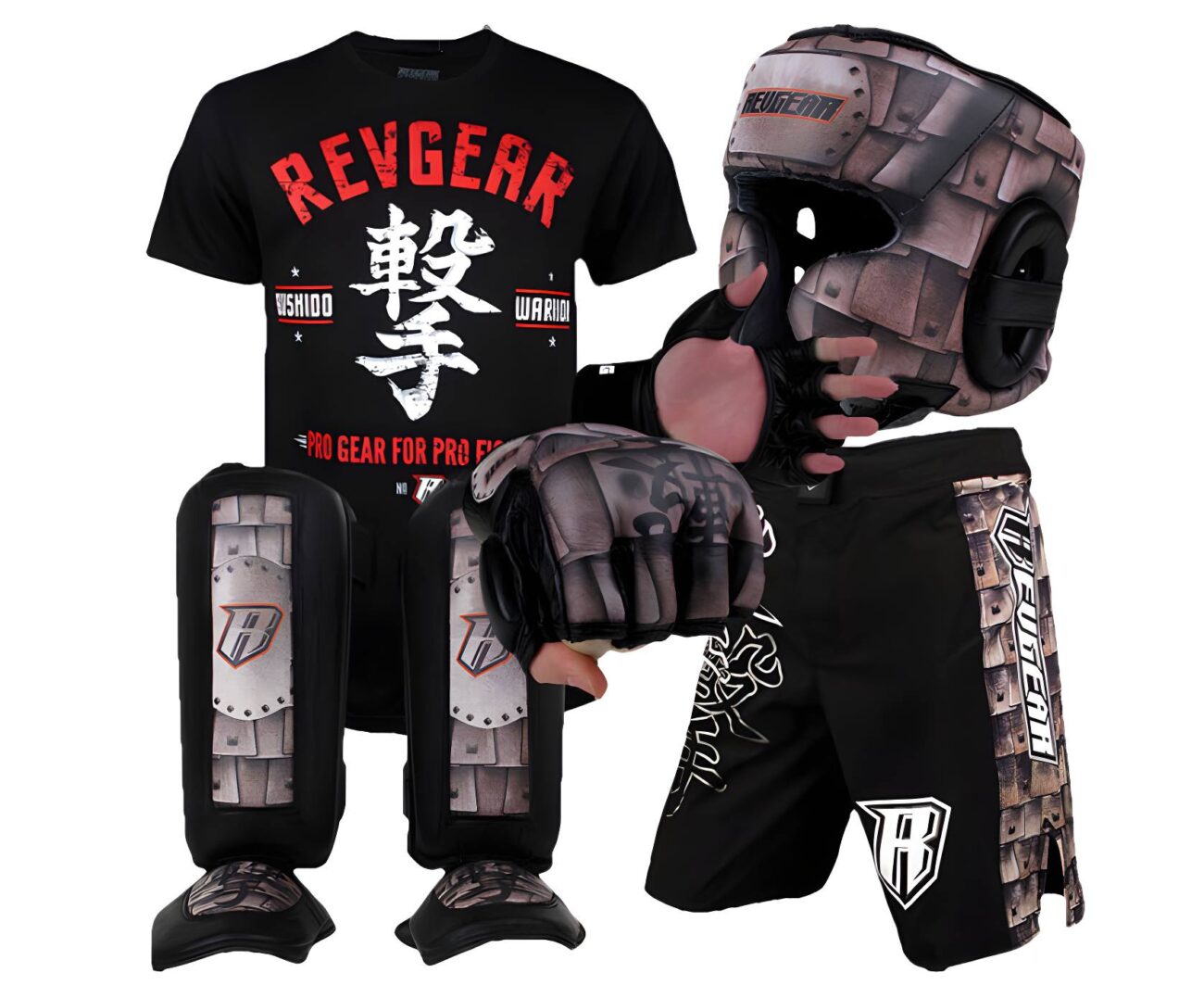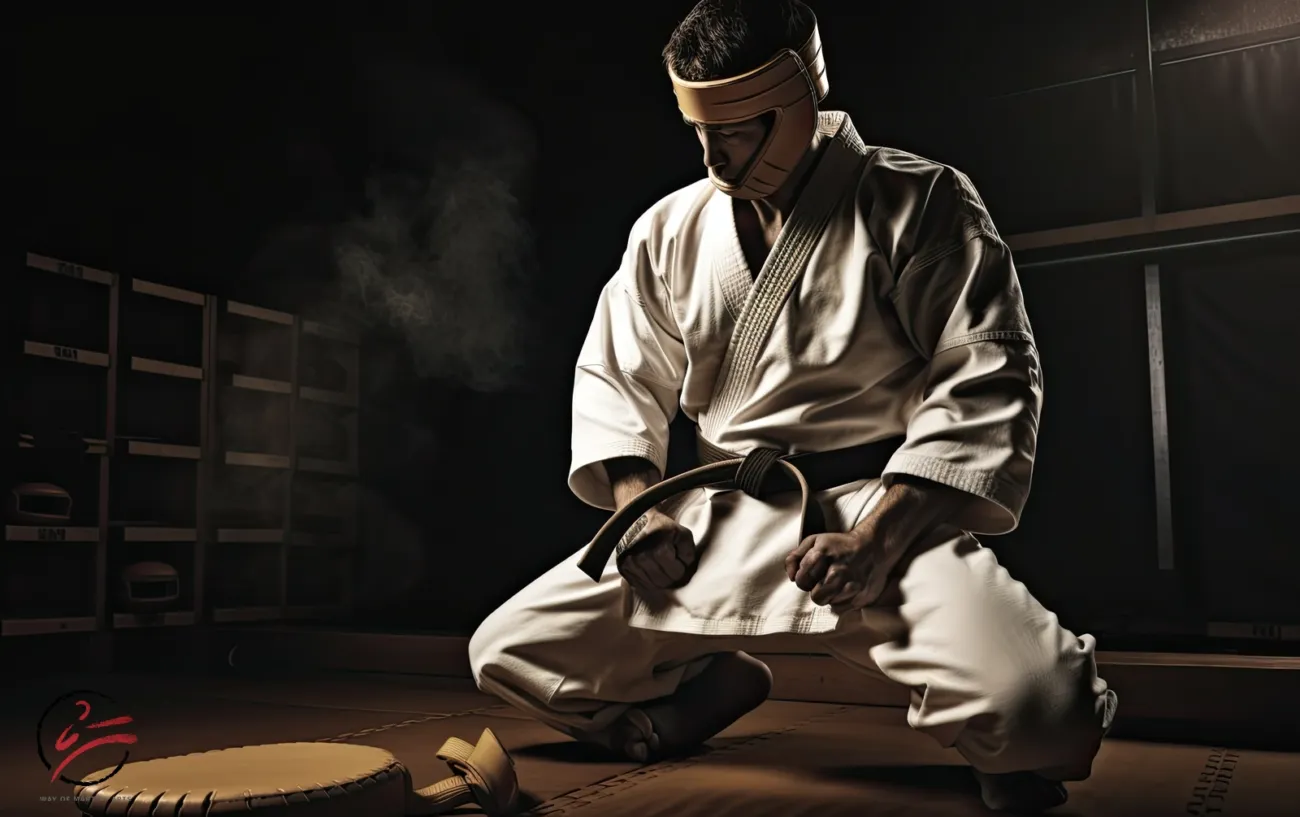Entering The World Of Brazilian Jiu-Jitsu: An Introduction To Gear And Equipment
Brazilian jiu-jitsu is a grappling martial art. Its popularity skyrocketed after Royce Gracie’s victory in the first UFC tournament in 1993. Despite a guy in BJJ gi weighing only 180 lbs, he submitted way heavier opponents and forced them to tap.
But what is the essence behind this magical fighting style? How is it even possible to submit a way heavier opponent? After all, weight classes exist for a reason! The secret answer is – a powerful submission game!

Jiu-jitsu gear matters because it helps you to train safely and put your performance to the next level. Different types of BJJ gear exist, depending on whether you practice with or without BJJ gis.
This article will inform you about the different training equipment types required for various BJJ styles and their functions. Let’s deep dive into the world of jiu-jitsu training gear!
Our Best BJJ Gear Reviews
- Best BJJ Gi Brand 2023: Train Harder, Fight Stronger, Be Unbeatable
- Best BJJ Rash Guards in 2023: Enhance Your Bjj Experience
- Best BJJ and Judo Gi For Tall Skinny Guys
- Best BJJ Bag: Pack Everything You Need For The Mats And Beyond
Gi Or No Gi: Exploring The Two Sides Of Brazilian Jiu-Jitsu Attire
There are two types of Brazilian jiu-jitsu – gi and no gi. You’ll need a gi, a belt, a mouth guard, and a groin protector for a successful BJJ gi session. Optionally, you can take a piece of headgear to prevent issues with the cauliflower ear.
On the other hand, no-gi requires rash guards, spats or grappling shorts, and protectors for knees and elbows. You should also wear a mouth guard and groin protector, while headgear is optional. Remember, your goal is to prevent serious injury by any means necessary in a training session – more pieces of jiu-jitsu protective gear are always better!
The Classic Essentials: Traditional Gear For Brazilian Jiu-Jitsu Training
One of the defining characteristics of the legendary Brazilian martial art is BJJ gi. There are many benefits of BJJ gis:
- It makes you aware you can be grabbed and manipulated, leading to better defense.
- BJJ gis boosts your offense, transition, and submission switch game.
- More technical game, a better feel of the fight and techniques.
- You’ll be more closely aware of any flaws in your game.
- It protects your knees and elbows from injuries in grappling sessions.
You will also have to wrap a BJJ belt around your waist for a successful Brazilian jiu jitsu gi session. A belt holds your gi, but it also shows your level of knowledge.

Unraveling The Mysteries Of The Brasilian Jiu Jitsu Gi: Features And Benefits
There are different components of BJJ gi – jacket and pants. Before you buy a model, ask yourself a question – what are my jiu jitsu plans and goals? Do I want to practice for fun or take part in competitions against an opponent? Do I plan to save some money or spend more for a high-quality piece of training gear? Also, look for a perfect fit and a durable model that tolerates a strong grip – you don’t want your sleeve or lapel to rip after the first training session!
There are many different types of BJJ gis – training, beginner Kimono, lightweight, competition, heavyweight, backup, travel, and unusual BJJ gi. Most BJJ gis contains 100% cotton or a blend that is predominantly cotton, but you can also find hemp-made models for more money.
While unusual BJJ gis is known for custom designs and details, others are specific pieces of equipment with a purpose. For example, a competition gi fulfills the tournament rules, while a lightweight BJJ gi helps you roll faster and attempt more submission switches and transitions. You can carry a heavyweight gi for more protection but reduces your transition speed on the mats.
Beyond Colors Of BJJ Belts: The Meaning And Function Of BJJ Belt
The ultimate function of BJJ belts is to show the level of knowledge. BJJ belt colors show where one is progressing from beginner to master, and every color means something.
BJJ belt colors signify where one is at in their progression from beginner to master level. Specifically, in Brazilian Jiu-Jitsu, the standard progression is white, blue, purple, brown, black, red, and black, then red.
The white belt means purity, a total newbie, while the blue belt means you solidified the knowledge of basic submissions and major positions. The purple one means you’re starting to shape your game as you mastered the basics. Brown belts usually have a special technique or a hold, while a black belt means you’re a master who can teach others. Higher grades are given to the people who made something very significant in the world of BJJ coaching.

Exploring The World Of No Gi BJJ: Must-Have Gear For Your Training
No gi BJJ workout demands rash guards and grappling shorts, while other protective gear is optional. Gear is very important when training without a gi to prevent injuries, there are no BJJ gis here. You can also wear spats, a groin cup, and mouthpiece, and even knee and elbow pads. You don’t want to hurt yourself.
Rash guards cover the upper body, while your BJJ pants or grappling shorts mustn’t have pockets. Optionally, you can wear the MMA shorts, but that’s far from a perfect solution for a jiu jitsu workout – it might limit your flexibility and transitions.

Stay Safe And Stylish: The Importance Of Rash Guards In No-Gi BJJ
A rash guard serves to gather sweat off your body, protect the skin, and help prevent mat burns. There are two types of rash guards – a short-sleeve and a long-sleeve model.
A short-sleeved rash guard gives you more mobility and speed, but you’ll sweat more. On the other hand, long-sleeved rash guards are heavier, but you’ll have a better grip when you wear them.
Fuji is one of the rare models to offer rash guards, BJJ gis, and all other pieces of training equipment for the legendary submission fighting style. Fuji is known for top-notch quality – you will see when you start rolling on the mats.
Maximizing Your Performance: How Grappling Shorts Can Enhance Your No-Gi BJJ Training
Grappling shorts are a pretty much nice piece of training equipment that provides freedom of movement and prevents overheating.
Good, quality grappling shorts will let you perform submission switches and roll from north-south to full guard and one arm trapped in the split of a second. Long models cover your ankles. Short ones are usually not shorter than the kneecap length, but it is not a strict rule.
When you’re looking for a great piece of BJJ shorts, pay close attention to stretchiness and durability. I will give you a hint – if it limits your transition from triangle to triangle armbar or Gogoplata, please choose a different model in the market or store.

Stay Safe On The Mat: The Importance Of Protective Gear In Brazilian Jiu-Jitsu
Many jiu jitsu practitioners neglect the significance of extra pieces of equipment. Groin cups, mouthguards, headgear, knee and elbow pads, and even braces matter!
An opponent could accidentally press your head, which leads after some time to a cauliflower ear. What if your training partner accidentally stuck his knee or foot in your crotch? A rash guard can’t protect your teeth during flying submission attempts, athletes who plan to last in BJJ wear custom-made mouthpieces for a reason!
Protect Your Smile: The Vital Role Of Mouthguards In BJJ Training
I’ve heard many people saying “I don’t need teeth protection”. Fine, what happens when the opponent accidentally elbows or knees you to the jaw during a transition attempt?
Your teeth are at risk, especially when you’re trying to pass the guard and improve to side control or half-guard. It is better to pay extra dollars for a mouth guard, your dentist will ask for more money to fix your teeth!
You can choose between custom mouthpiece designs and look better! Boil-and-bite model is also fine (ok for kids), but a custom-shaped model is made by an expert who shapes it towards your jaw and teeth.
Guarding Your Most Sensitive Area: The Need For Groin Protectors In BJJ Training
Imagine a flower sweep attempt and a training partner who defends via knee shield. Ouch, a knee to the nuts! I didn’t have a groin cup. I cannot continue the training session!
Well, fight shorts are not going to protect your family jewels, but a solid piece of groin cup will! Diamond MMA offers some of the best quality models in the market!
Keeping Your Head In The Game: The Benefits Of Head Gear For BJJ Training
Imagine an opponent trying to go for a double-leg takedown, then transitioning to a neck throw. Or think of an arm triangle attempt. There is contact between his hands and your head – if he pulls your ear, you might get hurt.
As time goes by, microtraumas lead to cauliflower ears. But you’ll reduce the chances of ugly ears when you got them covered with headgear. Plus, it protects other sensitive areas too.

Protecting Your Joints: The Advantages Of Braces And Knee Pads In BJJ Training
Knee pads, elbow pads, and braces serve to maximize protection and provide support during difficult workouts. For example, ankle pads are essential for fighters who suffered injuries. But an extra layer of protection is a great choice to protect yourself from tears and cuts in a no-gi jiu-jitsu combat.
In this sub-section, you could discuss the functions of braces and knee pads, such as how they provide support and protection during jiu-jitsu class.
Travel in Style: The Importance Of Gear Bags For Your BJJ Training Needs
Different types of BJJ bags are available in the market, such as duffel bags and backpacks. The ultimate criteria for the Best BJJ bag are size, the number of compartments, and durability. Every backpack is built differently, but you must place your gis and belt (or rash guard and fight shorts), mouthpiece, headgear, groin guard, and other pieces of training equipment. An insufficient amount of space is an issue.
A lot of compartments will help you keep your jiu jitsu training tools clean and organized. A duffel bag is also fine, but it is easier to move with a backpack and keeps your training gear cool.

Frequently Asked Questions About BJJ Wears
What should a beginner wear in BJJ?
Beginners should wear shorts (flip flops if possible) and a T-shirt, but they can buy a rash guard and BJJ pants after a while. If they plan to participate in gi sessions, then BJJ gi and a belt are mandatory, while other pieces of training equipment could come in handy later.
Is BJJ hard on joints?
Yes, there are many dangerous submission attempts and transitions. There is a constant threat of joint dislocations, pains, damage to your fingers and toes, and other potential injuries
What is the first day of BJJ like?
You come to the class, introduce yourself, change your clothes in the dressing room, secure valuable and personal items, and take part in a training session. The first jiu jitsu class consists of shrimps, rolls, basic transitions, and submission attempts.







